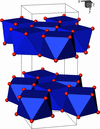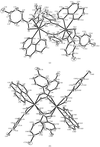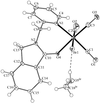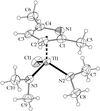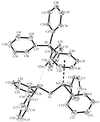issue contents
February 2005 issue

Cover illustration: The molecular structure of the cation in ![[mu]](/logos/entities/mu_rmgif.gif) -acetato-acetonitriletris(
-acetato-acetonitriletris(![[mu]](/logos/entities/mu_rmgif.gif) -N,N'-diphenylformamidinato)diruthenium tetrafluoroborate dichloromethane hemisolvate, with displacement ellipsoids shown at the 35% probability level. Only one orientation for the disordered phenyl group and the axially coordinated acetonitrile molecule is shown. H atoms have been omitted for clarity. See Angaridis, Cotton, Murillo & Wang [Acta Cryst. (2005), C61, m71-m73].
-N,N'-diphenylformamidinato)diruthenium tetrafluoroborate dichloromethane hemisolvate, with displacement ellipsoids shown at the 35% probability level. Only one orientation for the disordered phenyl group and the axially coordinated acetonitrile molecule is shown. H atoms have been omitted for clarity. See Angaridis, Cotton, Murillo & Wang [Acta Cryst. (2005), C61, m71-m73].
inorganic compounds










metal-organic compounds










 access
access























 access
access





organic compounds


 access
access







 access
access





















 access
access



 access
access



 journal menu
journal menu












